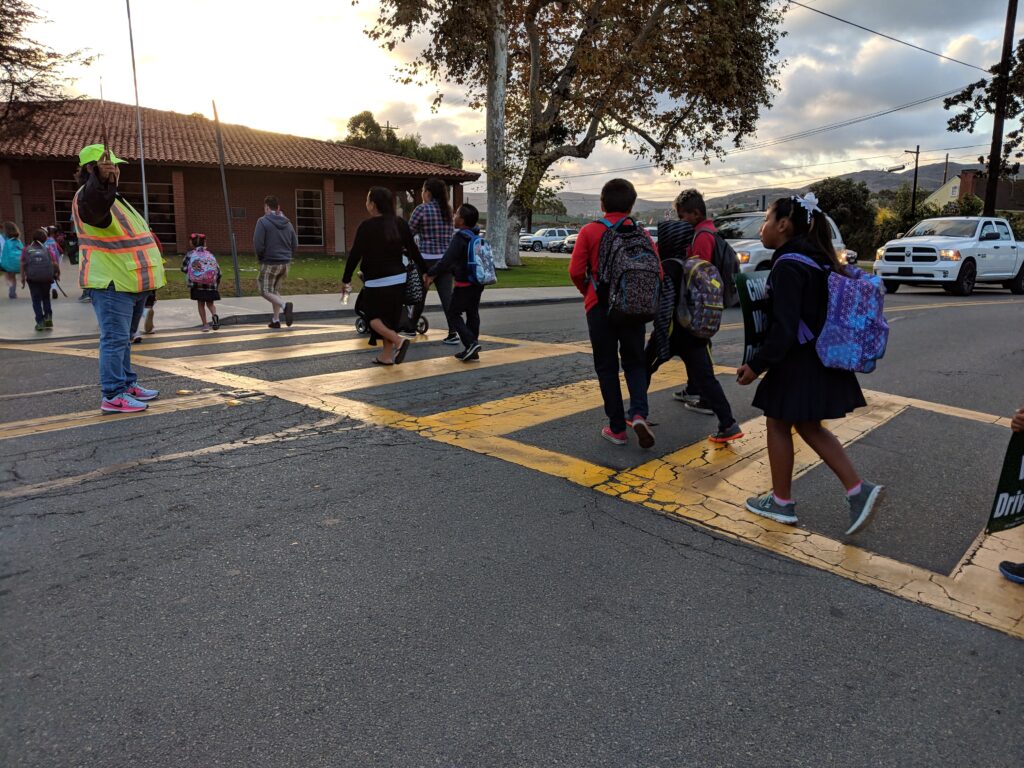By the California Department of Public Health Team
Fall is an especially busy time on our streets with back-to-school bringing many families, including children, onto the roadway network. Traffic volumes increase in residential areas, especially during peak school hours. Increased traffic near schools can often lead to a decline in children walking or biking to school as parents become concerned about safety. This creates a cycle where increased motor vehicle volumes further discourage active commutes.
The National Survey of Children’s Health (2016-2020) found that children experienced increased anxiety, depression and reduced physical activity after the COVID-19 pandemic. To help reverse this trend, the US Health and Human Services Office of Disease Prevention and Health Promotion promotes walking or biking to school as a way for children to help achieve the recommended 60 minutes of daily physical activity. Daily physical activity promotes cardiovascular fitness, strengthens muscles and bones, and helps maintain a healthy weight. It also can improve concentration, attention, and memory in children. Furthermore, walking and/or biking to school is part of a holistic approach to child development, promoting not only physical health but also mental well-being, social skills, academic success, and helps form healthy habits that can last a lifetime.
Safe Routes to School (SRTS) programs aim to break this cycle by providing education and improving infrastructure adjacent to schools. SRTS projects are eligible for Active Transportation Program (ATP) funding as infrastructure, non-infrastructure and combination project types. See completed ATP project profiles here.

